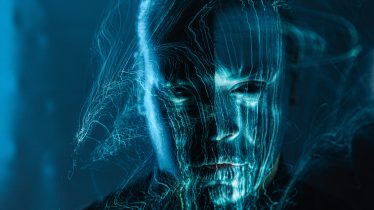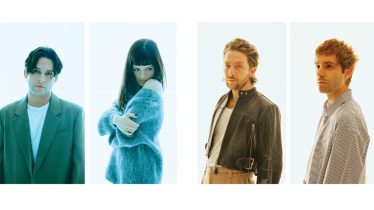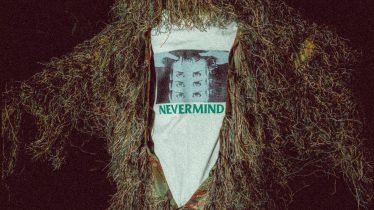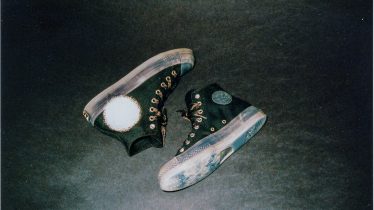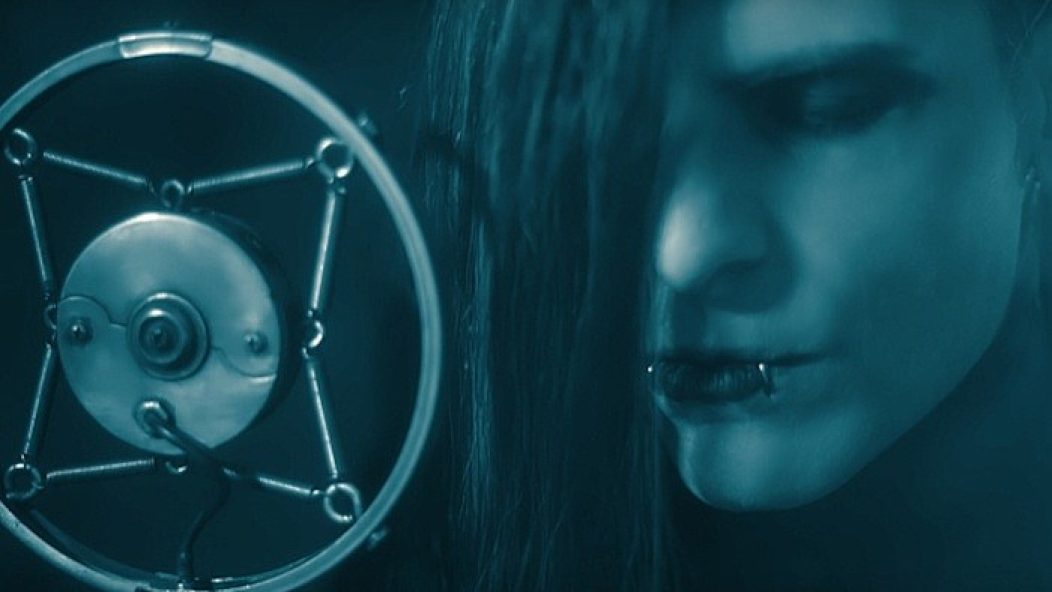
Ludovico Technique exude monstrous gothic energy in “Becoming Numb”
Ludovico Technique have just released a new music video for “Becoming Numb” exclusively via Alternative Press.
“Becoming Numb,” which dropped in March, is the fourth in a series of 13 staggered singles comprising their third album, Haunted People. Preceded by “Live As Myself,” “Up To The Flames” and “Embrace,” the track adds a gritty rock dimension to the eclectic, industrial–goth foundation the band have so masterfully established.
Read more: The Hunna shed light on mental health awareness in “Bad Place”—watch
Of course, frontman Ben V wasn’t going to let the transcendence go underrepresented.
In addition to driving the dark, sonic ambiance with his deep vocal prowess, the singer-songwriter is also the creative force behind the project’s visuals. So, it’s hardly surprising that the “Becoming Numb” video shows off a similar artistic intricacy to that of the song.
Long-standing fans will find a shroud of familiarity in the video’s generalized aesthetic and tones. However, it’s the subtle, stylistic divergences from previous works—particularly within the arborous background and elemental swaps—that make it so captivating.
Read more: Fashion loves metal, and these crossovers are all the proof you need
You can watch the “Becoming Numb” music video in its entirety below. Ben V spoke to Alternative Press ahead of the release regarding his cinematographic inspirations, the video’s symbolic nuances and the song’s context within Haunted People. Read on for everything he had to say.
One of the most remarkable aspects of your videos is that they’re self-produced without sacrificing quality or feeling blatantly DIY. Are there any other artists, musical or otherwise, who influence your approach to cinematography?
David Lynch, for sure. I’m a big David Lynch fan. The Elephant Man is probably my favorite film of all time with its shots and contrast. It’s a black-and-white film, so the way that that’s shown and utilized as a craft is an extremely big influence. As are silent-era films like Nosferatu, obviously. Bela Lugosi’s Dracula—which isn’t silent but from the 1930s—and classic stuff like that are very big influences on what I do. I want to pay homage to that and present a modern version within the same vein while bringing something new to the table.
There’s this interesting contrast between the lyrical themes and the sonic execution of “Becoming Numb.” How do you feel that the music video expands on the unique, near-dissonant atmosphere that you’ve created?
I wanted to specifically highlight some of the musical aspects [such as] that guitar riff, which I just thoroughly adore. And I wanted to [create] some visual cues and representations that would allow the viewer and listener to make the connection between the riff and the frantic, electrical nature while at the same time retaining an organic human element. The video represents that marriage of electrical and organic elements in a sort of Frankenstein way. When you think of Frankenstein’s monster, you don’t really think of a cyborg or robot. It’s more organic and human. It’s like that in that there’s this electrical and scientific element, including the microphone that I’m using, but it has a very monstrous and human aspect to it. That was very important.
There are quite a few visual elements within “Becoming Numb” that feel reminiscent of some of your earlier videos—the silhouette shots, for example, were a notable feature of “Absence.” Was this an intentional consideration or just a testament to a firm sense of visual identity?
The silhouette shots are very striking and important in conveying the sense of menacing, emotional intrigue. They’re one of my favorite things to use whenever I can get away with doing it. I find it to be one of the elements of cinematography and filmmaking that you can explore forever and ever. But it always feels timeless in this way that is very modern and very vintage all at the same time. It’s a very rewarding shot to pull off and execute well. And, emotionally, it conveys a certain atmosphere that really does lend itself to the intrigue.
Read more: 10 rising goth bands who will send you back to the ’80s darkwave era
Now, this video does differ a bit from your other recent releases in that it takes on more of a traditional, full-band format. What inspired your decision to take this approach?
The song dictates what the video should be. This particular song [has a] high-energy, rocking atmosphere. It has lots of high-energy drums, guitar, bass and all that stuff, so I felt that it should be represented by a full band performing the material. “Embrace,” [by contrast], has a different vibe that has more to do with the dark, baritone, goth vocals. It wasn’t so much a full-band vibe for what visually should be there.
How did it influence the overall cinematography?
Any time that you’re setting up and posing a shot, you’re working with lights, angles and shadows. You’re really just looking for your best shot, regardless of what it is. I wouldn’t say that it lends itself to being any more or less difficult because it all just depends on how many shots you’re going to take. So, if you’re going to take more shots with a guitar, bass player and drummer, then it might add a little bit to your shooting time, but it’s not going to change the craft by any means. You’re still looking for the same things in your composition that you normally would.
One other subtle but striking difference lies in the more transient visuals. Candles have been a primary fixture of many of your recent releases. This one, however, brings a different kind of energy, literally, with interspersed shots of electricity. How did you go about filming such accent imagery?
I would like to let [everyone] know that the electricity film is actually there. It’s not CGI or any sort of trickery. I’ll leave how it was achieved to the possible imagination, but it was in-camera. All of the electrical elements are totally filmed, and nothing [was added] in post-production other than some coloring.
Read more: 10 bands who led the very grisly idea of goth-punk across history
How do you feel that these shots contributed to the video’s ambiance?
In certain scenarios, the atmosphere lends itself to candelabras, flowing cloth, textures and lighting of that nature. For this particular material, I did really feel that the electrical component added that level of mystique and energy that worked best for the song. It was very intentional to not use some of the more organic elements like candles and candelabras. They will definitely make a return, but it’s very dependent on the mood of the song. I do find that, while they aren’t similar in certain regards, they are all elemental forces. So, when using fire in one project and electricity in [another], they still feel interconnected because they’re elemental.
You’re currently working on releasing your third full-length, Haunted People, track by track on a monthly basis. In what ways do you think “Becoming Numb” represents the overall record?
As a piece, “Becoming Numb” is one of the more guitar-heavy, goth-metal, industrial rocking ones. There needed to be space for that kind of energy on this album, as well as “Up To The Flames,” “Embrace,” “Live As Myself” and some of the ones coming out. “Becoming Numb” is one of the many pieces [comprising] the collection of expressed emotions that is Haunted People.
Can you tell us at all about your next release?
The next single is called “Poisoned,” and it drops late May. The chorus is, “Every day I’m poisoned by the lies I tell myself.” It has to do with trying to get through daily life, existing in the world and trying to convince yourself that everything will be OK. But those lies that you tell yourself to get through your daily existence are slowly eating away at the fabric of who you are and essentially killing it.
